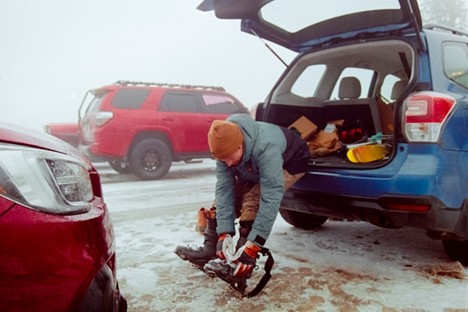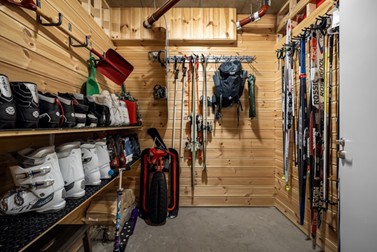
As the ski season winds down and warmer months approach, it’s essential to store your ski gear properly to keep it in top condition for next season. Neglecting proper storage can lead to rust, damage, and unnecessary wear and tear, ultimately impacting performance and longevity. Before packing everything away, consider visiting a ski shop for a professional tune-up or advice on the best storage practices. Follow these key steps to ensure your gear stays in peak shape and ready for your next adventure on the slopes.
Before storing any piece of equipment, it’s crucial to clean it properly to remove dirt, moisture, and any debris that may have accumulated over the season. For skis and snowboards, wipe off any snow, dirt, and grime with a damp cloth, using a mild soap solution if necessary.
Make sure to dry them completely to prevent rust from forming on the edges. Check the bindings for any trapped dirt or moisture and use a dry toothbrush or small brush to remove debris. For boots, remove the liners and let them dry fully before cleaning the shells with a damp cloth, ensuring they’re free of dirt and residue. Wipe down poles and check the straps for wear and tear. Clean the exterior of your helmet with a damp cloth and allow it to dry, while wiping down the goggles with a microfiber cloth and storing them in a protective pouch. Wash all ski clothing, including jackets, pants, and gloves, following the manufacturer’s instructions, and ensure everything is completely dry before storing to prevent mold and mildew.
Applying a thick layer of wax before storage helps protect the bases from drying out and prevents oxidation.
Before storing your gear, take some time to carefully inspect it for any damage or wear that may need attention. Start by checking the base for deep gouges or core shots, and if you find any, consider taking it to a professional for repairs. Ensure the bindings are in good condition—if they feel loose or damaged, it’s a good idea to have them checked.
Don’t forget to inspect the buckles, straps, and liners for signs of wear, as well as the grips and baskets for any cracks or missing pieces. Look over any fabric for tears, broken zippers, or worn areas that may require repair. Taking care of these small issues now will help extend the life of your gear and ensure it’s ready to go when you need it.
Where you store your ski gear is just as important as how you store it. The right environment will help maintain the integrity of your equipment.
Cool, Dry Place: Avoid humid or damp areas like basements or garages. Moisture can lead to rust and mold.
Away from Direct Sunlight: Prolonged exposure to sunlight can degrade materials and cause discoloration.
Avoid Extreme Temperatures: Store your gear in a place with consistent temperatures to prevent warping and damage.
Improper storage can lead to warped bases and edges, so it’s important to store your gear correctly. For skis, store them either lying flat or standing upright with space between them to avoid unnecessary pressure.
Snowboards should be laid flat in a dry place to keep them in good condition. When it comes to bindings, make sure to loosen ski bindings to reduce tension on the springs, which can help extend their lifespan. Proper storage will help ensure your gear stays in top shape for the next season.

To maintain the shape and functionality of your ski boots, it’s important to store them properly. Start by buckling them loosely, which helps prevent the plastic from warping over time. If possible, use a boot dryer before storage to remove any moisture and keep them fresh. For added protection, store your boots in a breathable boot bag to shield them from dust and damage.
Properly storing goggles and helmets is essential to prevent scratches and degradation. Store goggles in a microfiber pouch to protect the lenses, and be sure to avoid placing heavy objects on top of them. For helmets, keep them in a dry, temperature-controlled environment and refrain from stacking heavy items on them to maintain their shape and integrity.
Your ski apparel and accessories also need proper care to ensure they’re ready for the next season. Store jackets and pants on hangers to help maintain their shape and prevent creasing. For items like gloves, socks, and base layers, use a separate bag to keep them organized and easy to find next season. To protect your gear from dust, pests, and moisture, use airtight bins or garment bags to store everything securely.
Throughout the off-season, check your gear occasionally to ensure there are no signs of moisture, mold, or damage. This allows you to address any issues before they become major problems.
While storing your ski gear, consider making a checklist of any new equipment or replacements you may need. Off-season sales are a great time to upgrade your gear at a discount.
By following these steps, you’ll ensure your ski gear stays in optimal condition, ready for when the next snowfall arrives. Taking the time to properly store your equipment not only extends its lifespan but also helps you get back on the slopes without any hassle when the ski season returns!